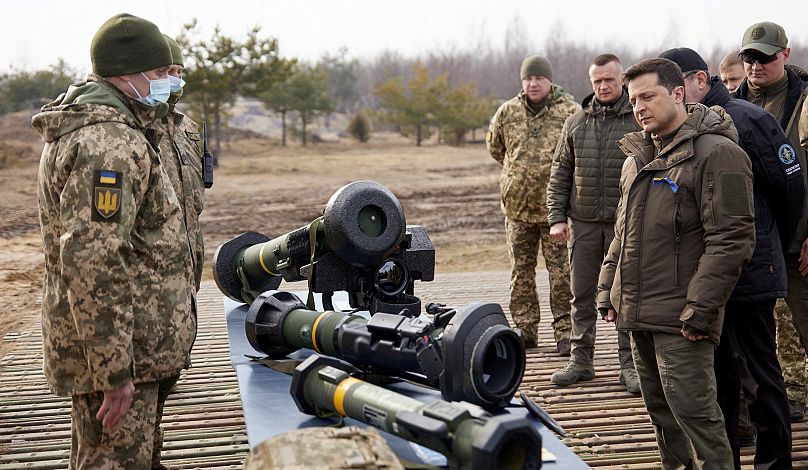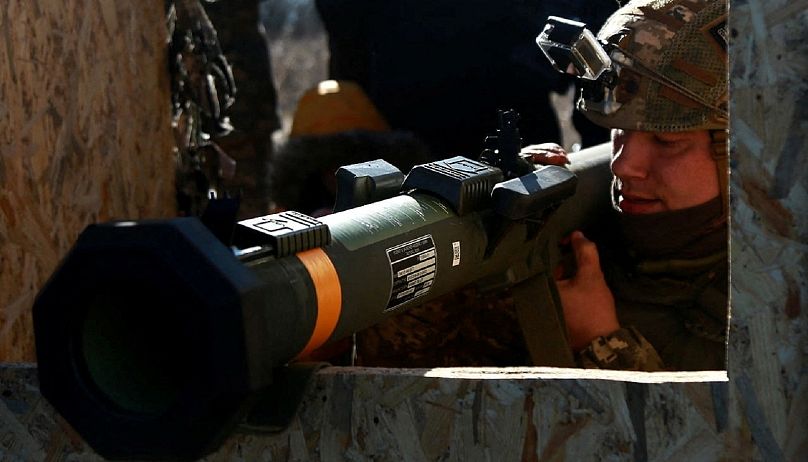Since Russia annexed Crimea in 2014, Ukraine has strengthened its military and technological strength. Is it enough to hold back Putin's forces?
Ukraine's armed forces are heavily outnumbered and outgunned by Russia's, but as Russia begans a large-scale invasion on Thursday, military experts say they would be capable of mounting significant resistance and inflicting heavy casualties.
Ukraine's army is also better trained and equipped than in 2014, when Russia captured the Crimea peninsula from Ukraine without a fight and is widely seen as highly-motivated to defend the country's heartland.
So, how does Ukraine's military stack up against the invading Russian forces?
How do the numbers look?
In terms of manpower and weapons, the arithmetic looks grim for Ukraine.
Most military experts' estimates put the number of Russian troops near Russia's border with Ukraine at more than 100,000. Russia has also moved some troops to Belarus, north of Ukraine, for military drills.
Russia's army has about 280,000 personnel and its combined armed forces total about 900,000, while its 2,840 battle tanks outnumber Ukraine's by more than three to one, according to the London-based International Institute for Strategic Studies (IISS).
Ukraine's prime minister said a decree recently signed by President Volodymyr Zelenskyy - on priority measures to strengthen the state's defence capabilities, increase the attractiveness of military service and the gradual transition to a professional army - would eventually bring Ukraine's armed forces to 361,000 personnel.
Although Ukraine trebled its defence budget in real terms from 2010 to 2020, its total defence expenditure in 2020 amounted to only $4.3 billion (€3.8 billion), just a tenth of Russia's.
Military analysts say Ukraine's anti-aircraft and anti-missile defences are weak, leaving it highly vulnerable to Russian strikes on its critical infrastructure. They say Russia would also seek to use its superiority in electronic warfare to paralyse its adversary's command and control and cut off communications with units in the field.
How experienced are Ukraine's forces?
Ukraine's forces have gained combat experience in the Donbass region in the east of the country, where they have been fighting Russia-backed separatists since 2014, and are highly motivated.
They also have short-range air defences and anti-tank weaponry, including US-supplied Javelin missiles, which would help to slow any Russian advance.
Beyond the regular army, Ukraine has volunteer territorial defence units and around 900,000 reservists. Most adult males have at least basic military training, so Russia could find itself facing stubborn and protracted resistance if it tried to capture and hold onto territory.
The military challenge would be incomparably higher than in previous wars Russia has fought since the Soviet Union's collapse, including in breakaway Chechnya in the 1990s and against Georgia in 2008.
What tech or hardware has the West given to help?
Western countries have stepped up arms deliveries to Ukraine, but Kyiv says it needs more. The United States has ruled out sending U.S. troops to Ukraine to fight.
The United States has provided more than $2.5 billion (€2.2 billion) in military aid since 2014, including Javelin anti-tank missiles, coastal patrol boats, Humvees, sniper rifles, reconnaissance drones, radar systems, night vision and radio equipment.
Further supplies could include Stinger anti-aircraft missiles, small arms and boats.
Turkey has sold Kyiv several batches of Bayraktar TB2 drones, which it deployed against Russian-backed separatists in eastern Ukraine.
Britain supplied Ukraine with a reported 2,000 short-range anti-tank missiles in January and sent British specialists to deliver training. It has also provided Saxon armoured vehicles.
Estonia said it was sending Javelin anti-armour missiles and Latvia and Lithuania are providing Stinger missiles. The Czech Republic has said it plans to donate 152 mm artillery ammunition.
Germany has ruled out arms deliveries to Ukraine but is co-financing a $6 million (€5.3 million) field hospital and providing training.













